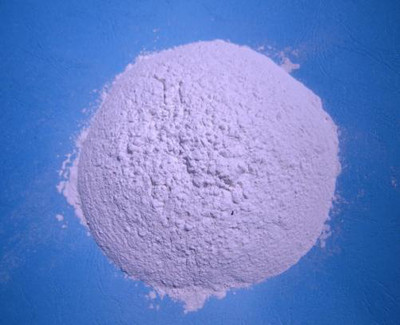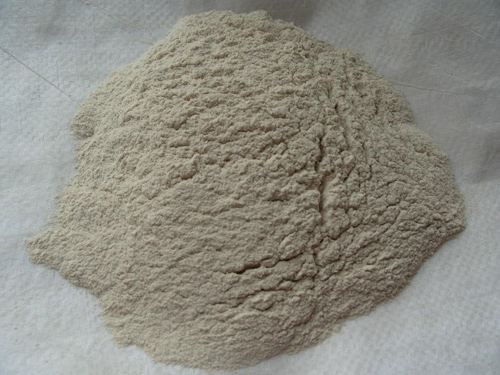Causes and preventive measures of cracks in anti-crack plastering mortar in external wall thermal insulation?

1、Analysis on the causes of cracks in the plastering mortar layer of the external wall thermal insulation system caused by material factors
1.Insulation board density is too low
At present, the density of thermal insulation board used for external wall insulation is mainly 18-22kg/m ³。 However, in the construction process, the construction unit often substitutes inferior products with 18kg/m ³ The following insulation boards are easy to crack the plastering mortar layer due to their low density, easy deformation and poor impact resistance.
2.The aging time of insulation board is not enough
The self-shrinkage deformation time of the insulation board in the natural environment is as long as 60 days. However, due to the factors such as capital turnover and cost control of the production enterprise, the production is usually based on sales. The insulation board used in a large number of projects has been put on the wall within 7 days of natural aging. The result of polymer mortar is that the insulation board continues to shrink after it is put on the wall, and the shrinkage stress of this reinforcement mortar is concentrated at the joint of the board, The tensile stress on the plastering mortar layer adhered to the insulation board causes the plastering mortar layer to crack.
3.Thermal insulation board material pulverization
Under normal conditions, the thermal insulation board is pulverized at a rate of 1-1.5mm per year. In actual construction, due to long construction period or construction every other year, the surface of the thermal insulation board is pulverized, and the pulverization interface seriously affects the bonding between the plastering mortar and the thermal insulation board, which is easy to lead to the unstable bonding of the thermal insulation board or the plastering mortar, causing the thermal insulation layer to fall off or the plastering mortar layer to crack.
4.The difference of thermal conductivity between plastering mortar and insulation board is too large
The lower the thermal conductivity of the material, the stronger its ability to block heat. The thermal conductivity of the expanded polystyrene board is 0.042W/(m · K), the thermal conductivity of the anti-crack mortar is 0.93W/(m · K), and the difference between the thermal conductivity of the two layers of material is 22 times. When the sun shines directly on the surface of the plastered mortar in summer, the temperature of the plastered mortar will rise sharply, and the surface temperature will be as high as 50-70 ℃. In case of sudden rainfall, the temperature will drop to about 15 ℃, and the temperature difference can reach 35-55 ℃. Such changes in temperature difference and the impact of the outdoor temperature in the day, night and season will lead to a large difference in the amount of deformation of the plastered mortar layer, and the plastered mortar is easy to crack.
5.Incompatibility and mismatch between bonding material and bonded material
The bonding material and the bonded material are incompatible and mismatched, resulting in the weak bonding of the insulation board and the cracking of the plastering mortar layer.
6.The bonding material has high adhesion, high strength and large shrinkage
The adhesive material has high adhesion, high strength and large shrinkage, which will also crack the insulation board and cause the plastering mortar layer to crack.

2、Analysis on the causes of cracks in the plastering mortar layer of the external wall thermal insulation system caused by construction factors
The external thermal insulation system of the external wall is completed at the construction site of the building project. The construction quality of the bonding mortar is related to the overall quality of the thermal insulation system, and is also an important factor that causes the cracking of the thermal insulation plaster mortar layer.
What is the plastering mortar? 1. The flatness deviation of the base course surface is too large. The methods of adjusting the thickness of the adhesive, adjusting the multi-layer plate, and leveling the surface will all lead to quality defects in the insulation quality.
2.The surface of the base layer contains dust and other substances that hinder the adhesion, and the interface treatment is not carried out during the adhesion.
3.The bonding area of the insulation board is too small, which does not meet the requirements of the specification and construction scheme, and does not meet the quality requirements of the bonding area.
4.The embedding depth and anchoring quantity of the anchoring nails of the insulation board do not meet the requirements of the design and construction scheme.
5.The overlapping width of alkali-resistant glass fiber gridding cloth does not meet the specification requirements, and cracks are formed at the overlapping position.
6.The four corners of the door and window openings are the places where the stress is concentrated. The alkali-resistant glass fiber gridding cloth is not laid along the 45 ° direction of the door and window openings, and cracks often occur.
7.When the plastering mortar layer is constructed in the sun or high temperature weather, the water retention performance is insufficient, resulting in the rapid water loss of the surface layer and causing cracks in the plastering mortar layer.
3、Preventive measures for cracks in plastering mortar layer of external wall thermal insulation system caused by material factors
1.The density of 18-22kg/m shall be selected in the drawing design ³ The incoming materials of the thermal insulation board shall be tested and qualified by the state-approved testing agency. The density of the thermal insulation materials shall be measured and accepted on site after they are delivered in large quantities. During the construction process, the density of the polystyrene board shall be measured and randomly checked on an irregular basis to prevent the construction unit from underfilling during the construction process.
2.The thermal insulation materials should be supplied by the system material supplier in a complete set to give full play to the overall effect of adhesive, thermal insulation board, alkali-resistant glass fiber mesh cloth and plastering mortar.
3.Try to select a formal and comprehensive construction enterprise. The developer can pay the advance payment for the pre-material. The construction unit must customize the insulation board in advance to ensure that the insulation board has sufficient aging time before the insulation construction, and prevent the insulation board from continuing to shrink after being put on the wall.
4.After the polystyrene board is pasted and fixed, the plastering layer shall be made in time after the bonding strength meets the requirements to avoid the pulverization of the warm board surface caused by the long exposure time.
5.The tensile bond strength of the base course and the adhesive shall not be less than 0.3MPa, and the area of bond interface separation shall not be greater than 50%.
6.The materials used for the external wall thermal insulation system shall comply with the requirements of relevant industry standards such as Expanded Polystyrene Board Thin Plastered External Wall Thermal Insulation System (JG 149-2003), Technical Specification for External Wall Thermal Insulation Engineering (JGJ 144-2004) and so on.
4、Preventive measures for cracks in plastering mortar layer of external wall thermal insulation system caused by construction factors
1.Base treatment
(1)Before construction, the previous process shall be strictly accepted. The flatness and verticality of the plastered base surface outside the wall must meet the specification requirements to ensure the construction quality of the thermal insulation board.
(2)The surface of the base course shall be clean and free of oil dirt, dust and other attachments that hinder bonding. The bulges, hollows and loose parts shall be removed. The leveling layer must be firmly bonded to the wall without delamination, hollows and cracks.
(3)The interface treatment with the interface agent can effectively enhance the bonding strength between the adhesive and the base.
2.Insulation layer construction
(1)When pasting the insulation board, the full adhesion method should be used, that is, the adhesive should be fully applied on the back of the insulation board and then scraped with a tooth-shaped trowel, and then adhered to the wall.
(2)The polystyrene board shall be pasted in a straight way. The vertical joints shall be staggered line by line. The vertical joints shall not appear when the adjacent polystyrene board is pasted.
(3)The thermal insulation board joints at the corners of the wall shall be staggered and interlocked. The thermal insulation boards at the four corners of the door and window openings shall not be spliced. The thermal insulation board joints shall be cut and formed by using a whole piece of polystyrene board. The thermal insulation board joints shall be at least 200mm away from the corners.
(4)The local leveling and repair of the surface of the insulation board should use the rubber powder polystyrene board particle insulation slurry, which can significantly improve the comprehensive performance of the insulation system.
(5)After the adhesive strength meets the requirements, the position and quantity of anchor nails must be set according to the design, specification or scheme requirements during the construction of mechanical fasteners, and the fixing depth must meet the requirements of the specification.
3.Construction of anti-crack protective layer
(1)The first floor of the building must be paved with double-layer gridding cloth, and the overlap of the first layer of gridding cloth can be butted. The second layer of gridding cloth is the same as the general method.
(2)The overlapping width of alkali-resistant grid cloth should not be less than 100mm. Dry overlapping is strictly prohibited. It must be embedded in anti-crack mortar. The thickness of anti-crack mortar protective layer should be controlled within 5mm.
(3)The strengthened alkali-resistant glass fiber gridding cloth shall be added at the places easy to produce stress concentration such as the periphery of the window corner and the wall corner.
(4)The alkali-resistant glass fiber gridding cloth shall be laid in the anti-crack mortar close to the side of the outer surface, and it is better to see the grain but not the mesh.
{aspcms:comment}





